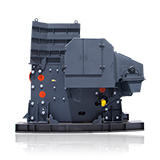How to Reduce Operating Costs in Granite Crushing Plant?
Granite is one of the most abundant and widely distributed types of igneous rocks on Earth, known for its durability and aesthetic appeal. As a result, granite is a popular choice in construction and landscaping. However, operating a granite crushing plant can be costly due to various factors, including equipment maintenance, energy consumption, and labor costs. Therefore, finding ways to reduce these operating costs is essential for enhancing profitability and sustainability. With the right strategies, plant operators can significantly reduce operating costs while maintaining high productivity.
This guide explores six proven methods to optimize granite crushing plant efficiency and minimize expenses.

1. Optimize Crushing Circuit Design
Choose the Right Crusher Configuration
- Primary Crushing: Use jaw crushers for high reduction ratios (6:1) and lower power consumption.
- Secondary/Tertiary Crushing: Cone crushers provide better particle shape and reduce recirculation load.
- Final Shaping: Vertical Shaft Impact (VSI) crushers improve cubical aggregate quality.
Cost-Saving Tip:
A well-designed two-stage (jaw + cone) or three-stage (jaw + cone + VSI) circuit reduces unnecessary recirculation, lowering energy costs by 15–20%.
2. Improve Wear Part Life & Reduce Replacement Costs
Granite’s high abrasiveness accelerates wear on:
- Jaw plates
- Cone crusher mantles & concaves
- VSI rotor tips
Solutions to Extend Wear Life
✔ Use Ultra-Hard Materials:
Manganese steel with chrome coating (for jaws & cones)
Tungsten carbide tips (for VSI rotors)
✔ Regularly Rotate Wear Parts:
Swap jaw plates when one side wears out to maximize usage.
✔ Monitor Wear with Smart Sensors:
IoT-enabled wear tracking reduces unplanned downtime.
Expected Savings:
30–50% longer wear life → Fewer replacements → Lower operating costs.
3. Reduce Energy Consumption
Electricity accounts for ~40% of granite crushing costs. Key optimizations:
A. Optimize Crusher Settings
Adjust CSS (Closed Side Setting) for optimal throughput.
Avoid over-crushing (reduces fines and energy waste).
B. Use High-Efficiency Motors
IE4/IE5-class motors save 5–10% energy vs. standard motors.
C. Implement Variable Frequency Drives (VFDs)
Adjust motor speed based on load → 15–25% energy savings.
Case Study:
A granite quarry in Spain reduced power costs by 18% after switching to VFD-controlled cone crushers.
4. Minimize Downtime with Preventive Maintenance
Unplanned shutdowns cost 5,000–20,000 per hour in lost production.
Best Practices
✅ Daily Checks:
Lubrication levels, belt tension, bearing temperatures.
✅ Scheduled Shutdowns:
Replace wear parts before failure.
✅ Predictive Maintenance:
Vibration sensors detect bearing issues early.
Result: 30% fewer breakdowns → Higher uptime → More profit.
5. Optimize Feed Size & Reduce Blockages
Improper feed material increases wear and energy waste.
Solutions
- Pre-Screening: Remove fines before crushing.
- Adjust Feeders: Prevent uneven material flow.
- Monitor Crusher Load: Avoid overfeeding.
Impact:
10–15% higher throughput with optimized feed.
6. Use Advanced Automation & Smart Controls
Automated systems improve efficiency and reduce labor costs.
Key Technologies
- PLC-based control systems (optimize crusher settings in real time).
- Remote monitoring (reduce on-site staffing needs).
- AI-powered optimization (adjusts settings for peak efficiency).
By implementing these strategies, granite crushing plants can reduce operating costs by 20–40% while maintaining high production quality.







